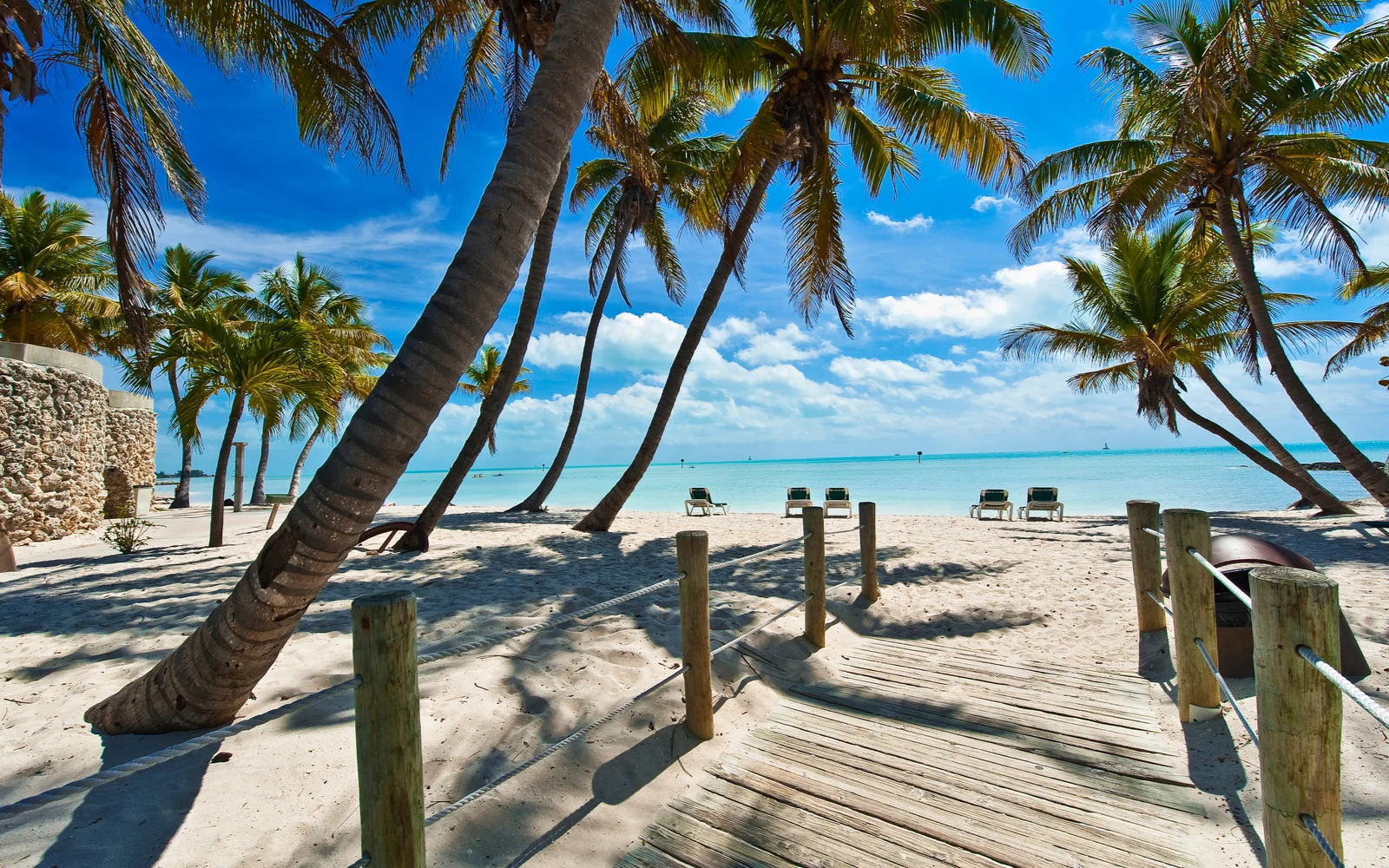What's the best time to visit Florida?
Sunny Florida (aptly nicknamed the Sunshine State) is home to some of the best beaches and most-loved attractions in the nation. If you’re in need of a dose of warm weather, endless activities or uninterrupted relaxation, and a taste of the tropical in the contiguous U.S., Florida is your destination.
Sunbathing beach-goers will appreciate the 1,350 miles of pristine coastline along the Atlantic Ocean and Gulf of Mexico. On-the-go families make the trek to Florida for its famous theme parks (Disney World, Universal Studios, Legoland, Sea World, and more).
Adventurers love to visit and camp at Florida’s national and state parks. Fun activities like wildlife watching (including gators, dolphins, flamingos, and so much more), parasailing, deep sea fishing, hiking, biking, swimming, and zip lining await those who love the great outdoors.
But while there’s countless thing to see and do throughout the year, when is the best time to visit Florida? Here’s our take.
The Overall Best Time to Visit Florida in 2025
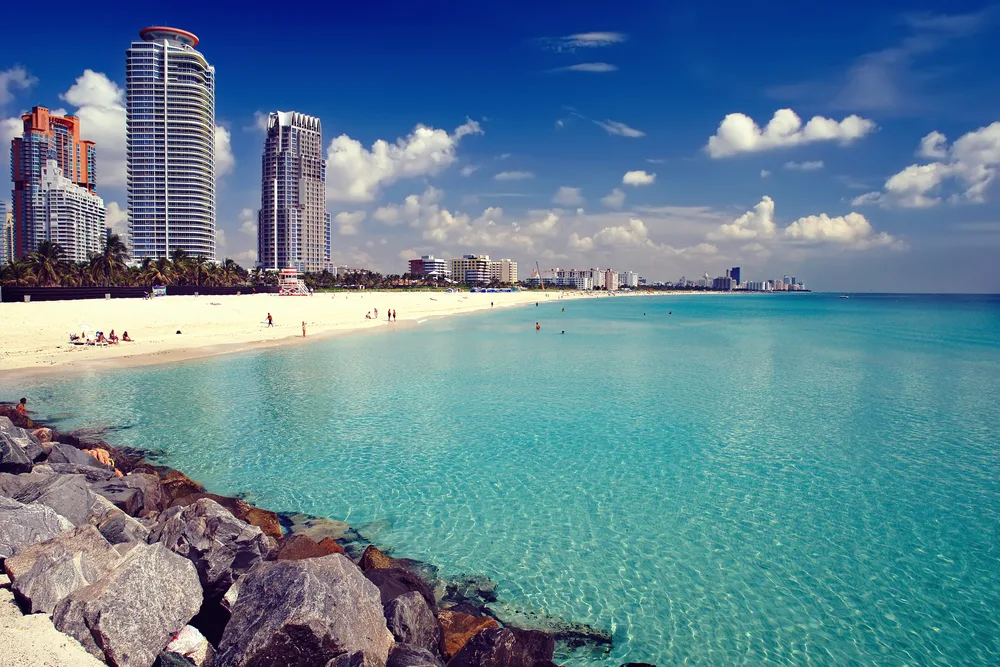
S.Borisov/Shutterstock
The overall best time to visit Florida is from March to May. The spring months offer the most balanced weather conditions, relatively uncrowded beaches, and little rainfall – everything you need for perfect beach days, city exploring, or theme park trips!
March in Florida sees comfortable, sunny weather with highs in the upper 70s and lows around 64F. The sun hangs out a little longer beginning in March, the ocean hovers around 75F, and spring is in full swing during March.
Mid and late March open up the Spring Break floodgates with visitors pouring in from around the country and globe. You may see higher prices on flights, car rentals, hotels, and activities during March, but it truly is an ideal time to visit Florida.
April is even warmer (but not yet stifling) with highs in the low 80s and little rainfall. On average, you’ll see about 5 days of rainfall in the month of April in Florida.
That means visiting in April is great if you plan to spend a lot of time outdoors – and we know you do! Easter creates a slight uptick in visitors and prices, but it’s short-lived. Prices on hotels, flights, and activities quickly dip after Easter.
May marks the end of Florida’s springtime with average temperatures rising to a perfect 77F (highs around 87F) and ocean temperatures around 81F. Beaches are less crowded as the main throngs of tourists won’t arrive until June.
With fewer tourists during May, you’ll benefit with reduced prices on hotels, restaurants, activities, and flights. It’s a perfect time to visit the Sunshine State!
Don't waste your hard-earned money. Get the best deal on your trip by comparing deals on Booking.com and Expedia!
- Options for all travel styles & budgets
- Price match guarantees
- Exclusive last-minute deals
Cheapest Time to Visit Florida
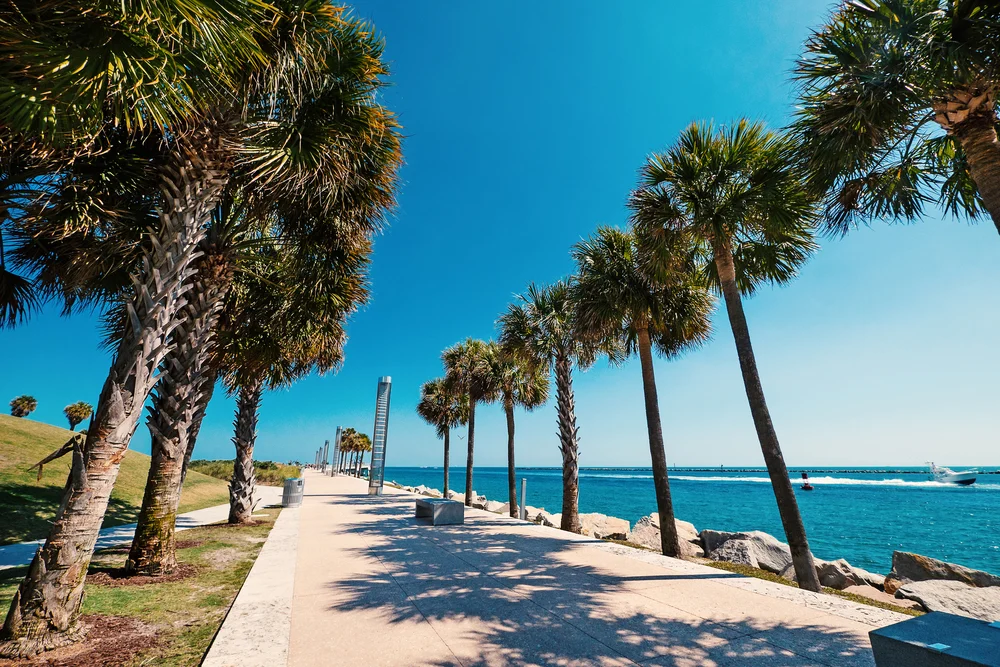
pio3/Shutterstock
The cheapest time to visit Florida is from January to February and from August until mid-November. These are short-lived low seasons when fewer tourists arrive and prices on flights, rentals, hotels, and activities take a major dip.
Flights and hotel prices hit rock bottom during this time as kids are back in school and the steady stream of tourists reduces to a trickle.
This is when the hot summer season begins to give way to a cooler, more moderate fall. The tail end of winter (January to February) sees mild weather conditions that are more spring-like than wintry.
Highs hit the low 70s and lows are near 50F, making these months ideal for camping if you’re the adventurous type. January and February offer some of the lowest prices on hotels and flights since fewer tourists make their way to the Sunshine State during these months.
Late summer and fall (August through mid-November) offer comparatively cheap prices on flights and hotels due to fewer tourists coming at this time.
Compared to January and February (the other cheapest time to visit), you’ll experience much hotter weather, more hours of sunshine, and warmer ocean water in late summer and fall.
These higher temperatures continually drop as fall takes over – from highs in the low 90s (August) to a more comfortable 77F (November).
Least Busy Time to Visit Florida
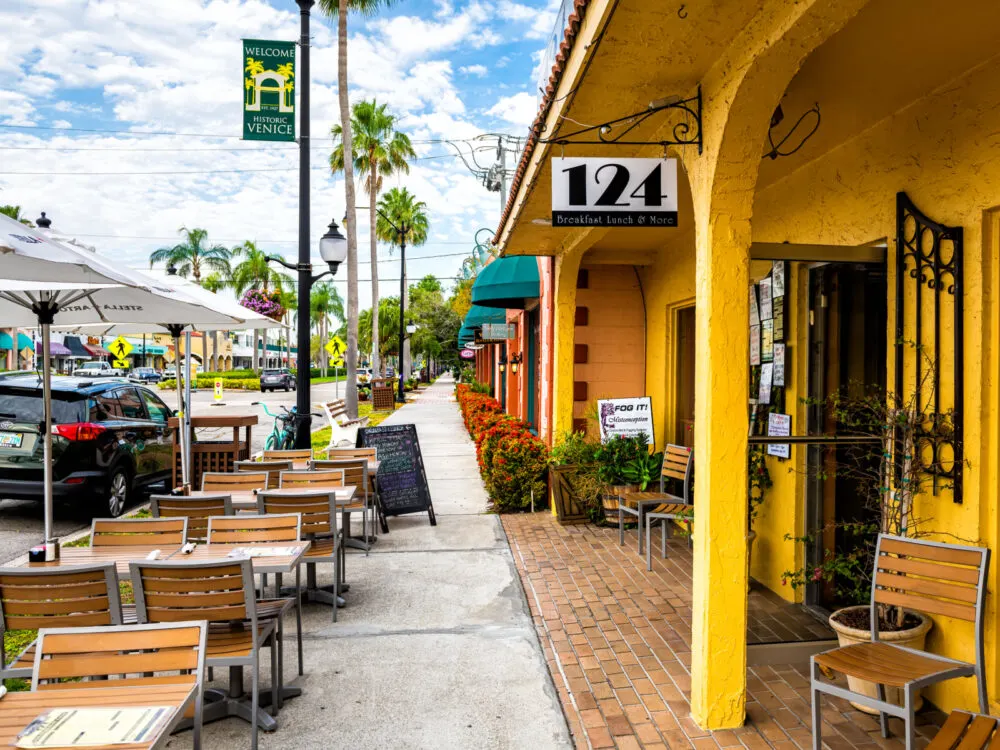
Andriy Blokhin/Shutterstock
The least busy time to visit Florida is from April to May and mid-September to November.
With the exception of Easter, Memorial Day weekend, and Labor Day weekend, these periods see the fewest tourists and visitors to give you uncrowded beaches, shorter lines for attractions, and lower prices on flights and hotels.
April to May mark the end of springtime in Florida with sunny skies, little rainfall, and warm temperatures hitting highs from 82F (April) to 90F (May). Plan your visit before or after Easter and avoid Memorial Day weekend to benefit from fewer crowds.
If total relaxation and solitude are your goals for the trip, you’ll want to check out secluded beaches with fewer tourist attractions (like Siesta Key Beach, St. Lucie, and Cape San Blas).
Mid-September (after Labor Day), October, and November also see fewer tourists for an uncrowded beach or park experience. With less demand during these months, prices drop on flights, hotels, food, and car rentals – another bonus!
Fall temperatures hit highs of 90F in September, 84F in October, and 77F in November. And since you’ll be one of the few on the beach or at the theme park, you can enjoy these warm temperatures that much more!
Worst Time to Visit Florida
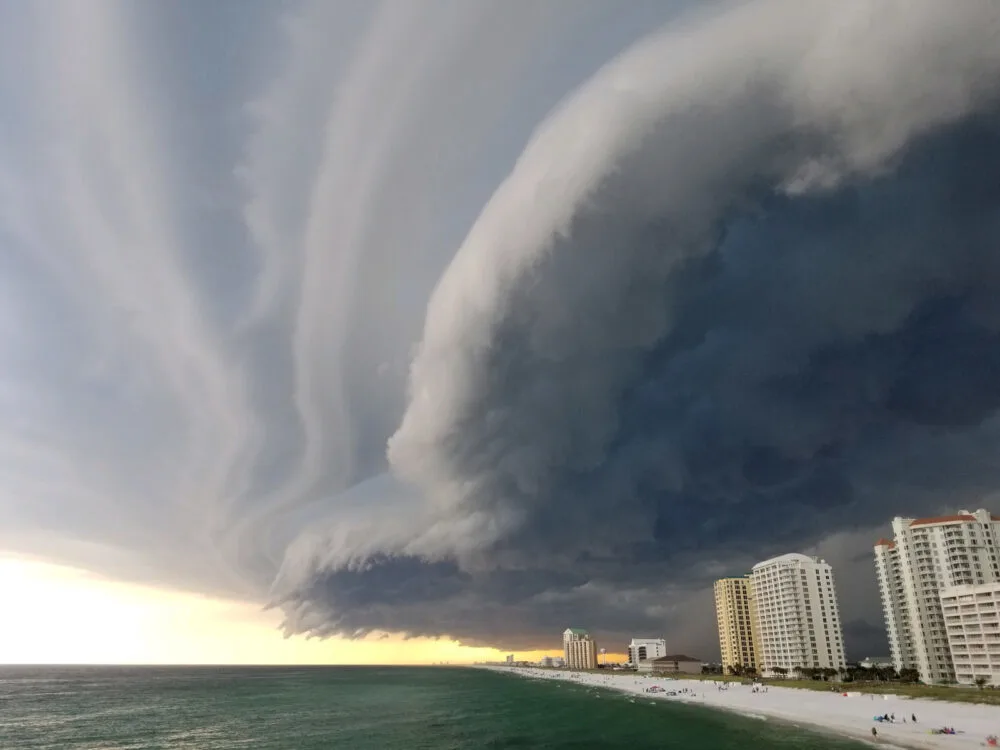
Holly Mazour/Shutterstock
The worst time to visit Florida is during the hottest summer months with the most severe weather and rainfall – June through August. June marks the start of Florida’s hurricane season and is when rainfall and temperatures really pick up.
June and July experience more than double the rainfall of the fall, winter, and spring months. While coastal rain and thunderstorms usually pass quickly in Florida, you’re still in for a lot of rain and cloudy skies that can ruin your daily plans during the summer.
The hot temperatures (highs in the 90s) can make your visit less comfortable if you plan to spend a lot of time outdoors. There are more hours of sunshine and a higher UV index during the summer months, so a sunburn may be in your forecast if you forget to lather up with SPF!
Even though summer is considered the “worst” time to visit Florida, visiting at this time doesn’t mean you can’t enjoy yourself. In fact, many love visiting during the summer when the kids are out of school and all activities are open.
Plan a few indoor activities you’d like to do for rainy afternoons, stay in a hotel near the beach so you can squeeze in shore time while the weather’s nice, and take advantage of the beauty of Florida in full summer swing.
Florida by Month: Climate & Activities
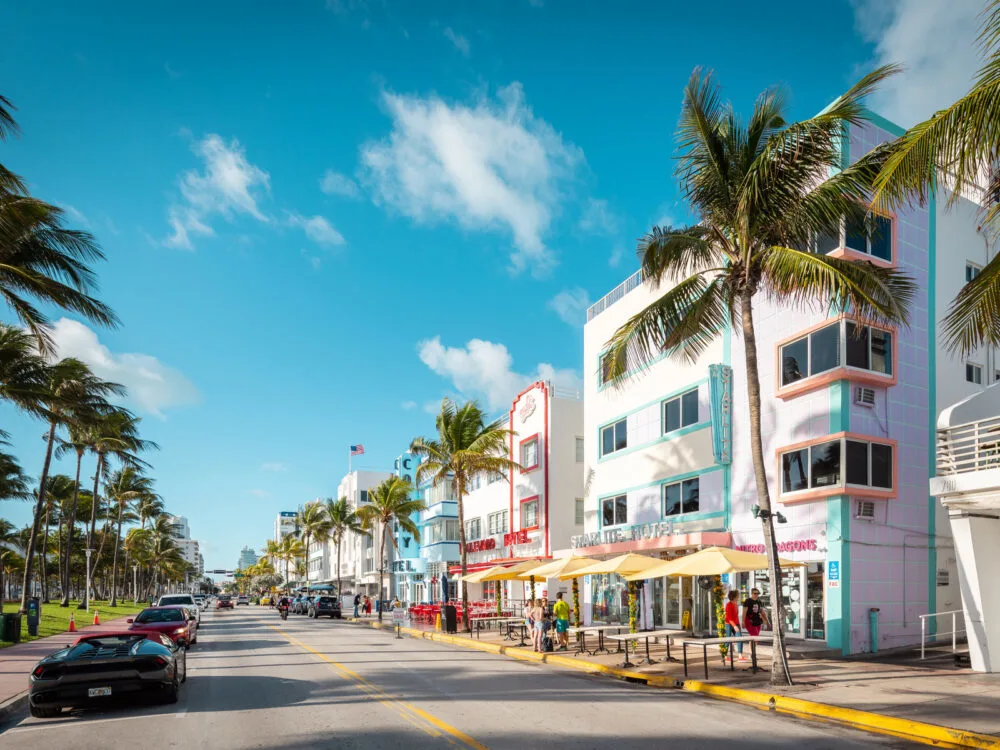
Dmitry Tkachenko Photo/Shutterstock
Still unsure about the best time to visit Florida? Take a look at our summary of the weather and climate by month below:
January
In January, winter temperatures in Florida range from 8 to 23°C (46-73°F). It’s an ideal time for exploring the theme parks in Orlando, attending the Gasparilla Pirate Festival in Tampa, and enjoying the beaches in Miami.
February
Similar to January, February maintains mild temperatures between 10 to 24°C (50-75°F). Visitors can experience the Edison Festival of Light in Fort Myers, explore the Everglades National Park, and attend the Miami International Boat Show.
March
As spring begins, temperatures range from 13 to 26°C (55-79°F). March is perfect for attending the Epcot International Flower & Garden Festival in Orlando, enjoying the beaches on the Gulf Coast, and participating in spring training baseball games.
April
Spring temperatures in Florida range from 16 to 28°C (61-82°F). It’s an ideal time for visiting the Florida Keys, attending the Sun ‘n Fun Aerospace Expo in Lakeland, and exploring the cultural scene in Sarasota.
May
In May, Florida sees temperatures ranging from 20 to 31°C (68-88°F). It’s a great month for enjoying the beaches on the Atlantic Coast, attending the Florida Folk Festival in White Springs, and exploring the historic district of St. Augustine.
June
Summer arrives with temperatures between 23 to 32°C (73-90°F). June offers opportunities for theme park adventures in Orlando, enjoying the nightlife in Miami Beach, and exploring the nature trails in the Ocala National Forest.
July
July maintains hot temperatures from 24 to 33°C (75-91°F). It’s a popular month for water activities in the Florida Keys, attending Independence Day celebrations, and enjoying the vibrant nightlife in Tampa.
August
Temperatures in August range from 24 to 33°C (75-91°F). Despite the heat, it’s an excellent time for family-friendly attractions in Orlando, exploring the Everglades, and enjoying the beaches on the Gulf Coast.
September
As fall begins in Florida, September temperatures range from 23 to 32°C (73-90°F). September offers a pleasant transition, with opportunities for wildlife viewing in the Big Cypress National Preserve and exploring the arts scene in Sarasota.
October
October sees temperatures ranging from 20 to 30°C (68-86°F). It’s a great month for attending the Epcot International Food & Wine Festival in Orlando, enjoying fall festivals, and exploring the scenic beauty of the St. Johns River.
November
Fall temperatures range from 16 to 27°C (61-81°F). November is perfect for visiting the Kennedy Space Center, attending Art Basel in Miami, and exploring the natural beauty of the Florida Panhandle.
December
In December, winter returns to Forida, with temperatures ranging from 12 to 23°C (54-73°F). This time brings opportunities for holiday festivities in Naples, enjoying the beaches of Sanibel Island, and experiencing the cultural scene in Coral Gables.
Things to Consider
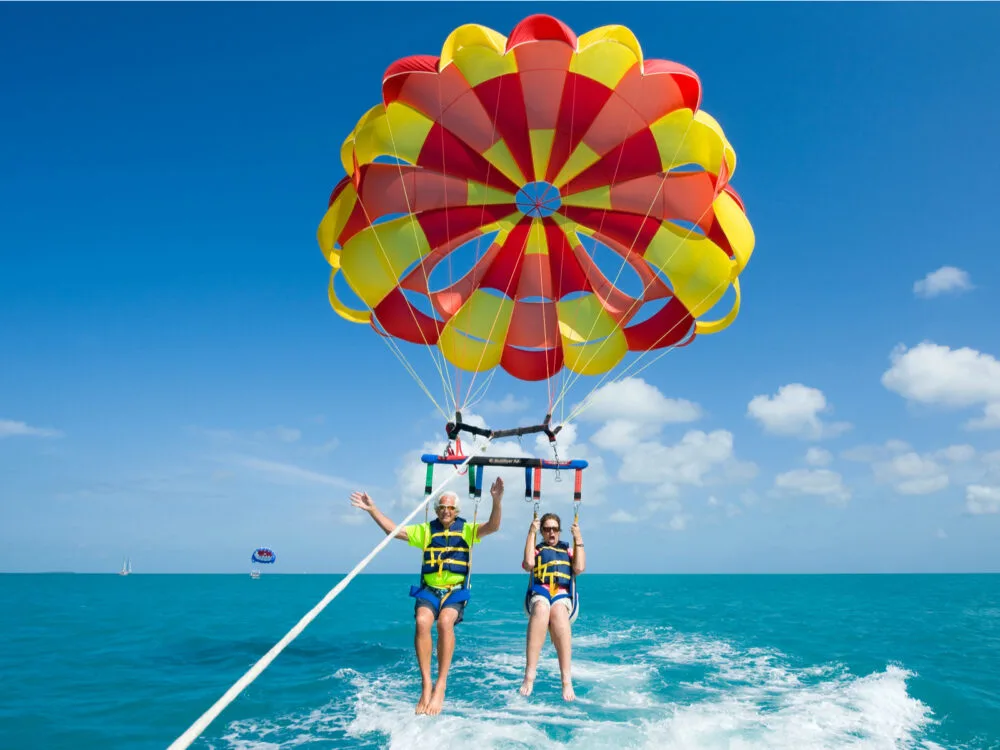
Robert Hoetink/Shutterstock
You know the best time to visit Florida for your upcoming getaway, but what else should you know to make the most of your vacation? Here are a few tips that’ll help you plan your trip like a seasoned Florida traveler.
- Know the busiest ($$) holidays. Plan your visit outside of the busiest holidays to enjoy a less crowded, more affordable trip with plenty of hotel and flight availability. President’s Day (late February), Spring Break, Easter, Memorial Day weekend, July 4th weekend, Labor Day weekend, Thanksgiving, Christmas, and New Year’s Eve/Day are some of the busiest times of year for Florida. Remember: If school’s out, you’re sure to run into crowds and higher prices.
- Explore off the beaten path. There are tons of popular restaurants, shops, and things to do for tourists in Florida, but you’ll enjoy your trip even more by venturing off the beaten path. With the exception of large theme parks (where you’re better off staying onsite and taking advantage of all the shops and eateries within), talking to locals to find their favorite restaurants, fishing spots, and secluded beaches is ideal. You’ll get a taste of what the locals love so much about their town and a deeper appreciation for what Florida has to offer.
- Bring the right gear. Whether you’re planning a beach, city, theme park, or national/state park trip, having the right gear makes any trip more enjoyable. Comfy walking shoes and sandals, lightweight attire, 30+ SPF sunscreen, a lightweight jacket for cooler nights, sun protection clothing, and an umbrella are all must-haves in Florida. If you’re bringing littles along, make sure to pack beach gear to keep them busy – sand buckets and shovels, castle molds, sand-proof blankets, and collapsible sun canopies are a great idea.
- Always ask about discounts. Most hotels, airlines, rental services, and attractions offer discounts for certain membership groups and print discount coupons in brochures or activity guides. Ask about student, senior, military, corporate, and auto club discounts. Pick up any activity guides and brochures that interest you while you’re there – you’ll always find specials and discounts that range from freebies and BOGO deals to steep discounts on attractions and activities. When in doubt, just ask an employee if there are any discounts offered!
- Pay attention to the warning flags on the beach. Florida’s beaches are one of the biggest draws for tourists, but they can be dangerous at times. Follow the helpful beach flag warning system to stay on top of threats and know when to stay out of the water. Beach warning flags are coded as follows:
- Double Red: Water closed to public use
- Red: High hazard (rough surf and currents)
- Yellow: Medium hazard (slightly rough surf and currents)
- Green: Low hazard (calm conditions)
- Purple: Marine pests (jellyfish, sharks, stingrays, etc.)
If you keep these tips in mind, you’ll have the best and most affordable Florida vacation, no matter your destination.
Don't waste your hard-earned money. Get the best deal on your trip by comparing deals on Booking.com and Expedia!
- Options for all travel styles & budgets
- Price match guarantees
- Exclusive last-minute deals
So, What’s the Best Time to Visit Florida?
We’ve covered a lot of info in this guide, so let’s quickly recap the best times to visit Florida before you go.
The overall best time to visit Florida is March through May (springtime). The weather’s mild and warm, there’s little rain, and activities and attractions are getting into gear for the busy summer season.
This time of year offers the best balance – good weather, relatively few crowds (except for Spring Break, Easter, and Memorial Day weekend), and average pricing on flights and hotels.
Now that you know the best time to visit Florida for your trip goals, it’s time to start planning your trip and itinerary. Looking for ideas and activities to keep you busy while you’re there? Check out these guides next!



